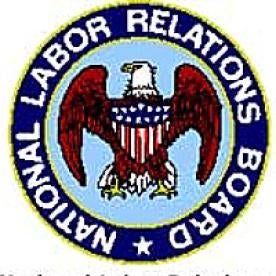On December 12, 2014, the National Labor Relations Board issued the so-called Quickie Election rule, designed to shorten the timeline for NLRB elections and minimize pre-election litigation. The rule is set to take effect on April 14, 2015.
While the validity of the rule is expected to be challenged, union organizing efforts, which have languished for years, are certain to receive a boost from the Board’s action in the meantime. Employers unprepared for the rule will be at a disadvantage.
According to the Board, the purpose of the rule is to “simplify representation-case procedures, codify best practices, and make them more transparent and uniform across [NLRB] regions.” Under the rule, NLRB Regional Directors are instructed to schedule elections “at the earliest date practicable” after a petition is filed. This may shorten the election timeline from 42 days currently to as little as 14 days.
A Jackson Lewis webinar detailing the rule and preventive steps your organization may consider will be held on Tuesday, January 6 at 12:00 EST. Register for the webinar here.
Steps employers should consider include:
1. Developing a strategic, company-wide labor relations plan. Key executives and general counsel should review the organization’s options so that company officials can make strategic decisions in light of the new rule and other recent NLRB actions.
2. Training managers/supervisors before the rule is implemented. Topics for such training should include revised NLRB election procedures, their impact on your organization, the employer’s position on unionization, the significance of authorization cards, early warning signs of union activity, and what and when your organization may communicate lawfully with employees regarding union drives and signing union cards. Every individual who meets the definition of a “supervisor” under the National Labor Relations Act should be trained.
3. Eliminating issues immediately. Conduct a legal/human resource vulnerability assessment to identify, address, and eliminate legitimate workplace issues now.
4. Conducting critical bargaining unit and supervisory analyses. In its attempt to minimize pre-election litigation, the Board’s new rule fosters uncertainty as to the bargaining unit, voter eligibility and the supervisory status of individuals who may communicate lawfully on an employer’s behalf. Clarification is essential.
-
Conduct a bargaining unit analysis to establish the best units from an employer perspective in light of recent NLRB decisions. Consider the pros and cons ofexpanding the unit at the site and for including multiple sites. The Board also has issued decisions on micro-units and joint employers that affect many organizations. New decisions and rules (and others expected soon) should be part of any new legal analysis.
-
Assess status of potential supervisors. Supervisors are not eligible to vote and, as agents of the employer, the employer is responsible under the NLRA for their statements and actions. The employer also may use or need individuals to communicate on its behalf (e.g., while off shift or in languages other than English). Consider adjustments based upon practical and legal considerations.
5. Developing a representation case litigation plan. The employer will be required to file a position statement concerning unit issues and other matterswithin days of the NLRB petition being filed. Organizations must think strategically now and prepare information in advance.
6. Communicating with employees.
-
Communicate about the new NLRB rule and its effect.
-
Address your organization’s labor relations philosophy in new hire orientation and an employee handbook.
-
Consider regular messaging consistent with the organization’s labor relations approach.
7. Preparing a “break the glass kit.” Have a company-specific “don’t sign the card” letter and other communications and handouts drafted so that they are ready to be finalized quickly in the event of union activity.
8. Identifying and training a rapid response team. Consider having a designated team that is prepared and ready to act in the event of union activity. These core members of management would have in-depth knowledge about what the employer can and cannot say or do. The team can communicate quickly and effectively with employees on key issues.







 i
i


